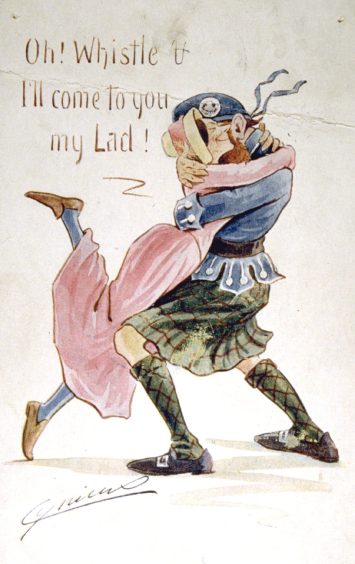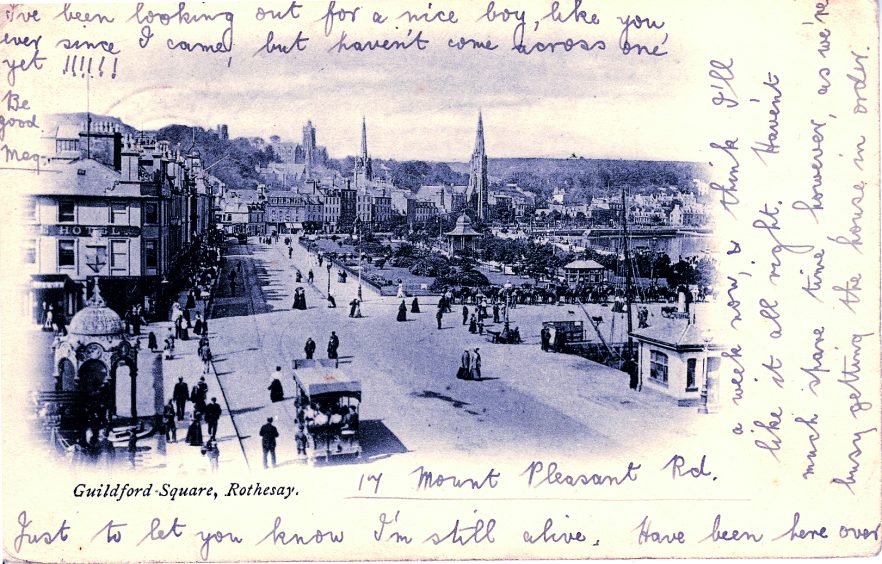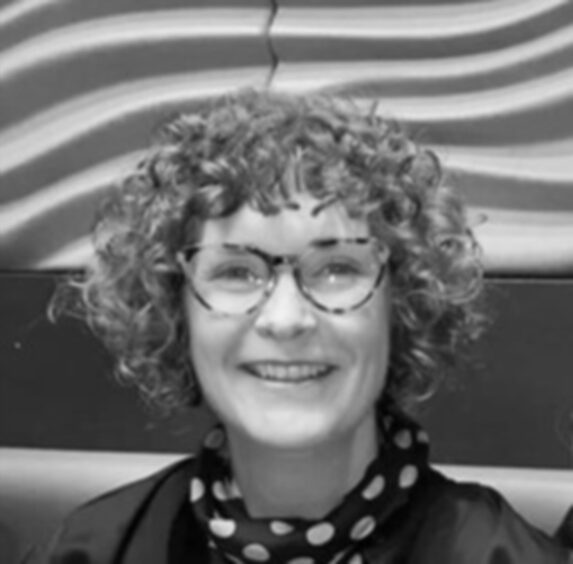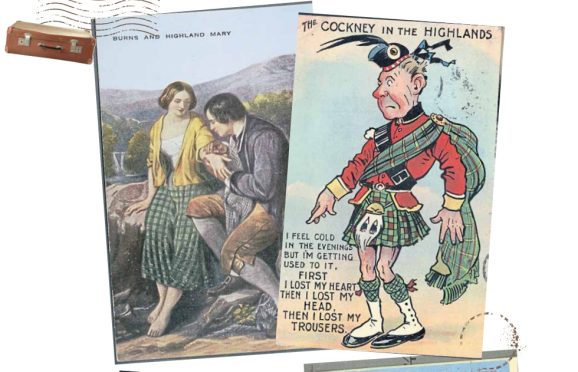
Every couple of years, a new report comes out about the imminent demise of the humble postcard.
Digital communication and social media allow us to share our holiday snaps in seconds, or video-call our loved ones from a sunny poolside.
Despite many of us having fond memories of postcards from holidays of yore, we now rarely bother to find time to send one off on our present-day travels – especially when we’ll likely arrive back home well before the postcard does.
Yet, just over 100 years ago, postcards were at the zenith of their popularity. They originated in Austria-Hungary in the late 19th Century, and quickly spread across the globe as a cost-efficient way to send a note to loved ones.
They were significantly cheaper than sending a letter, but were snootily dubbed by some as “the poor man’s telephone”.
Charting the changing face of Scotland
Tomorrow night Jackie Sangster, learning manager at Historic Environment Scotland, is hosting Wish You Were Here, an online webinar that will tell the story of Scotland’s changing landscape through postcards.
As postcards often have photos or illustrations depicting the places they are sold, they can be used as a helpful tool to trace the changing face of a town or landmark.
Sangster said: “Scotland’s society and subsequently its landscape has shifted from rural subsistence with people moving to urban, industrial environments in our towns and cities. Today we live in an almost post-industrial landscape.
“Postcards have captured many of these moments and unintentionally documented our country’s evolution.”
Postcards document other things about the past too. A certain genre of postcard, especially those from the seaside, have a special reputation for being a little cheeky. Riffling through them gives us a titillating glimpse of what was considered risqué and humorous in times gone by. They also give us an insight into the fashions and aspirations of their time.
During her research, Sangster found that in the early 20th Century, when cars were considered a luxury and aspirational item, they appeared frequently on postcards – so much so that she found one that showed a car mounting the summit of Ben Nevis.
Cherished memories
The potential future historical importance is not why we preserve and cherish postcards though. We keep them because they hold important memories and messages from the people we love, or loved, the most. So much is the power of postcards that even simple, non-flashy messages hold great meaning years after they were originally written.
For Sangster, one postcard in her research stood out. It was a love note from a woman called Meg to a man named Cecil. She posted it from Rothesay to his home in Stonehaven in 1902. It reads: “Just to let you know I’m still alive, have been here over a week now, and think I’ll like it all right. Haven’t much spare time however, as we’re busy getting the house in order. I’ve been looking out for a nice boy, like you, ever since I came but haven’t come across one yet!!!!!! Be good. Meg”.
“It also seems that Meg has used ‘the language of the stamp’,” said Sangster. “Because the postcard isn’t in an envelope, anyone in the family can read it. So, if you’re a young person trying to engage the attention of another young person, you don’t want everyone in the house to read it.
“So apparently there was a lot of code in the angle of the stamp. In Meg’s postcard, we can see the Ha’Penny stamp is affixed upside-down and tilted to the right, judging by Edward VII’s inverted head. According to my research, this translates as ‘Have you forgotten me?’, and, if it were leaning further to the right it would say ‘With all my heart’.”
Victoria Iglikowski-Broad, principal records specialist in Diverse Histories at The National Archives, deals with historical documentation every day.
On the power of handwritten letters, she said: “Letters are physical things that we can hold, touch and open, and I think that makes them more likely to be preserved and make them feel special. I feel like the level of effort you put into a letter is more considered and takes more time than something digital.
“There’s a lovely feeling about going through a box of personal cards or letters. There’s a lovely nostalgia and a great way of remembering people – I think a handwritten letter can be really powerful.”
‘It’s a way of saying I miss you’
When Mikey Dougan from Leeds was in his early-20s, he fell in love with sending postcards. He said: “I was round at my friend’s house, and she had a friend who was on tour with a band in the US, and he sent her a postcard detailing what he’d done that week and where he’d been, and I thought it was fantastic. I thought ‘I’ll do that next time I’m away’, and I’ve been doing it ever since.”
When Mikey’s brother, Tony, moved to Australia 17 years ago, Mikey began to send him postcards all the time. “Essentially, every place I’ve been to outside of Leeds, I’ll send him a postcard. Even if it’s only 10 miles away or the seaside, I’ll send one. I write all sorts of different things. It’s usually just the state of my mind that day. Sometimes it’ll be absolute nonsense, sometimes it’ll be a detailed description of my visit. Sometimes there’s no words – I just send a drawing or a doodle! It’s a way of saying ‘I miss you’ without using those words.”
Tony has kept every postcard Mikey has ever sent. Tony said: “The postcards have been arriving around once a month for the last 17 years! I decided to start archiving them in A5 folders which now number 10 volumes. Even though Mike and I regularly connect through social media, a postcard is very much a special, ‘real’ thing created just for me. Living so far away from my brother is hard sometimes but when a postcard arrives that has been written and posted by his hands it somehow contains some of the physical presence of a person. It’s a tangible artefact I can keep forever.”
So, while the postcard might be down, it will never really be out. Technology may change but love and connection remain the same over generations.
Iglikowski-Broad said: “I don’t see letters and postcards dying out.
“When you write, you know that the intent comes across differently in the written format and that it can be very powerful to receive. As long as that remains true, letters and postcards will never truly go away.”
Can you help solve the mystery of St Enoch’s?
Jackie Sangster wondered if Sunday Post readers could help her solve a small mystery she found on a postcard during her research.
“In some ways it’s the mundane messages that are the most interesting. In an example from 1904, a woman who is away asks her friend to swap shifts at work.
The postcard is addressed to: Miss Jessie Duncan. Postal Tils. G.P.O. Glasgow, Postmark Rothesay 6 PM AP 16 04
It reads:
Dear Jessie,
How did you enjoy St Enoch’s. I suppose you will be a dab at slip knots and big bundles by this time. Hope you enjoyed your weekend at home. Would you be so kind and look my duty and let me know and if its early I would like very much if Effie could give me a late change if she can’t perhaps some other late girl would but I much prefer a late duty at St Enoch’s if I could get it. Please excuse me giving you all this bother.
Love from Margaret
“I’d be interested if readers could enlighten me as to the business referred to at St Enoch’s – what were Jessie and Margaret employed to do? Were they factory workers or maybe nurses?”

Enjoy the convenience of having The Sunday Post delivered as a digital ePaper straight to your smartphone, tablet or computer.
Subscribe for only £5.49 a month and enjoy all the benefits of the printed paper as a digital replica.
Subscribe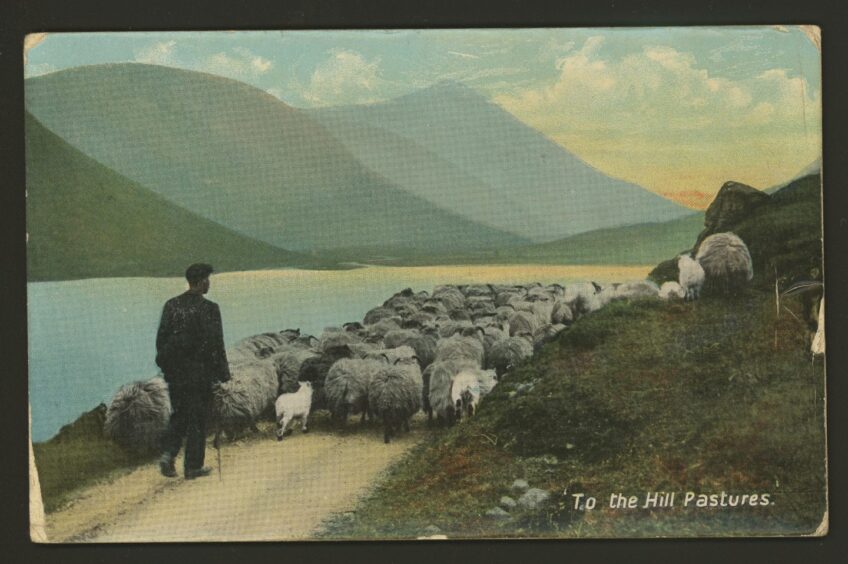 © SYSTEM
© SYSTEM